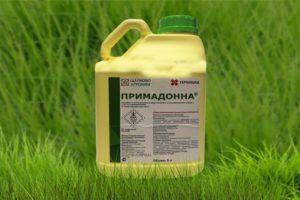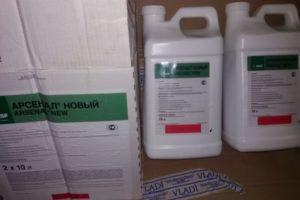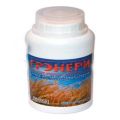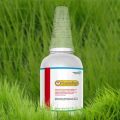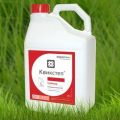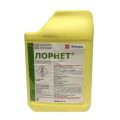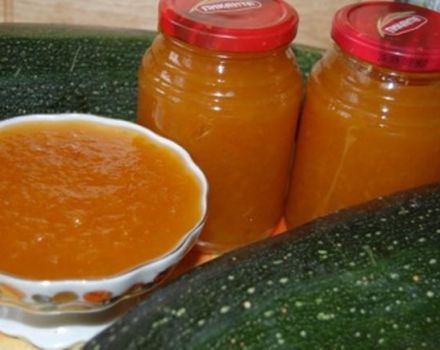Instructions for the use of herbicide Basis, safety measures and analogs
Basis is a two-component herbicide that is used for post-emergence treatment of a corn field. The drug destroys all weeds that take nutrients from the main crop. The basis acts selectively and systematically. The drug does not harm corn and humans, its active substances are not found in the tissues of the main culture.
Composition, purpose and form of release of the drug Basis
It is a two-component herbicide that kills cereal and dicotyledonous weeds in corn crops. Produced at Russian production facilities owned by the American company DuPont.
This drug contains active substances from the sulfonylurea class - rimsulfuron and thifensulfuron-methyl. The herbicidal agent has systemic and selective activity. It destroys ragweed, horseback, shepherd's purse, wheatgrass, thistle, sow thistle and other weeds. The preparation is in the form of a dry, flowable suspension. Sold in plastic jars weighing 100 grams.

How does a herbicide work?
The basis is dissolved in water at the dosage indicated in the instructions. The herbicide mixture is irrigated in corn fields at the beginning of plant growth.
The drug has a selective activity, therefore it acts only on weeds.
Active substances penetrate into the weeds through the leaves and roots. Distributed to organs, the herbicide acts on the enzyme necessary for the synthesis of essential amino acids.
After just a couple of hours, the treated weeds stop growing and gradually begin to wither. The first signs of wilting (chlorosis, necrosis) can be seen after 3-5 days. Completely die in 2-3 weeks.
Pros of using
Advantages of the herbicidal agent Basis:
- fast and long-term disposal of all types of weeds:
- can be used for preventive purposes;
- applied in any period of weed vegetation;
- has systemic and selective activity;
- one treatment is enough.

Consumption rate of the drug
The herbicidal agent is used in the following dosages (at a flow rate of the working fluid - 200-300 l / ha):
- For the destruction of annual cereals and dicotyledons: 20 g / ha.
- For the destruction of perennial grasses and dicotyledons: 25 g / ha.
Working tool preparation
Fine sprayers are used for irrigation of the corn field. First, the matrix solution is prepared in a plastic bucket.Then fill the sprayer tank halfway with clean water. With the stirrer on, add the matrix mixture. The stirrer is turned off and the required amount of liquid is poured into the tank. The herbicide mixture is prepared on the day the corn field is irrigated.

How to use the ready-made solution
A solution is prepared in accordance with the proportions indicated in the instructions on the day of irrigation of the corn field. The herbicide should not be used on weeds that are wet with dew or rain. The basis is undesirable if the main crop (corn) is under stress due to drought, lack of nutrients, diseases, insects. The herbicide is used on corn crops grown for grain or silage only once a season.
On the night before irrigation, make sure that the thermometer does not drop below 10 degrees Celsius. It is not recommended to cultivate a corn field if the temperature rises above 25 degrees during the day. Herbicidal agent Basis is used when the corn has 2-5 leaves.
Weeds are vulnerable at the earliest stage of their development (in the phase of 1-4 leaves). Basis is always recommended to be used with surfactant Trend 90. This agent improves the wetting of weeds with a herbicide solution.

Precautions
The person involved in the preparation of the herbicide solution must follow the precautions. You need to work with this chemical in a protective suit, respirator or mask, rubber boots and gloves. It is forbidden to inhale vapors and drink the solution.
After field work, you need to wash your hands and face with warm water and soap, rinse your mouth with a soda solution.
Toxicity degree
The basis belongs to the 3rd class of toxicity. The herbicide is harmless to humans and animals. It is not recommended to cultivate the field during the summer period of bees. The drug is non-toxic for beneficial soil insects. In the soil, active substances disintegrate within a month. It is safer to use the herbicide on acidic soil. On alkaline soil, chemical degradation of Basis components is difficult.

Compatibility
Herbicide Basis can be used in conjunction with other herbicidal preparations for the complex destruction of weeds. When several herbicides are used together, the dosage is reduced. The basis can be used in conjunction with fungicides and insecticidal agents.
True, it is forbidden to use this herbicide with organophosphate insecticidal preparations. The herbicidal agent must not be mixed with fertilizers for foliar feeding.

Storage of funds
In a tightly closed original packaging, the herbicidal agent Basis can be stored for 3 years from the date of manufacture. The expiration date is usually indicated on the label. This pesticide needs to be stored in a separate room. It is better to keep the drug in a warehouse protected from moisture and sunlight.
The herbicide is stored at room temperature. The prepared solution is used in one go. The herbicidal water mixture should not be stored for more than one day as the activity of the chemicals will decrease over time. It is better to calculate the required amount of the preparation for dilution before use. After irrigation of the field, unused residues are poured outside the agricultural land.

Drug analogues
Analogs of the herbicidal agent Basis are the preparations Centaur, Batu. These herbicides have exactly the same composition and are used to kill weeds in corn crops. Both of these drugs are dissolved in water before use, in the proportions indicated in the instructions.
